The Monastery of St Moses, Syria: The Pottery
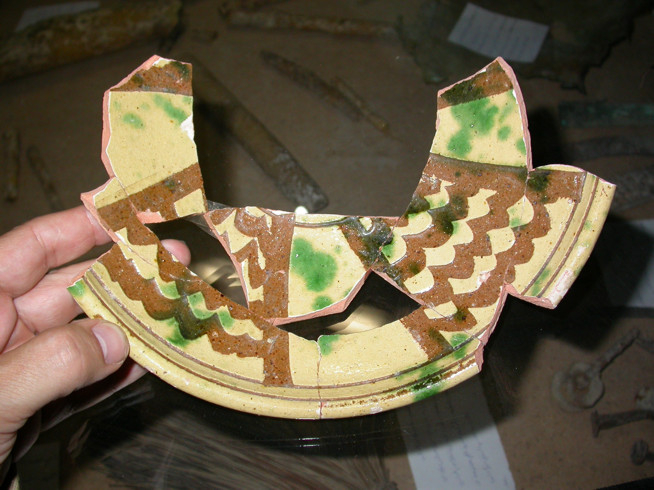
Despite there being almost 1,400 years of occupation at Deir Mar Musa, strangely the overwhelming majority of the pottery found at the site can be assigned to the "Mamluk" period. The period of Mamluk rule in Greater Syria (1260-1516) generally reflects an archaeological horizon that post-dates the destruction of the great ceramic production centre at al-Raqqa, and Eastern Syria became a wasteland on the border with the Mongol Ilkhanate dynasty of Iran, leaving Damascus as the sole producer of elite quality under-glaze painted stone-paste bodied ceramics. Lesser-quality glazed wares are dominated by lead-glazed types, including the slip-incised and slip-painted types. It is also characterised by imports from Yuan China.
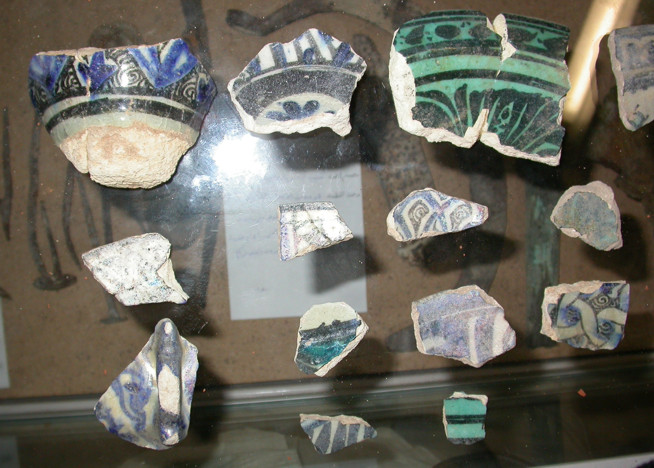
A selection of high-quality Mamluk period pottery from Deir Mar Musa, all with a stonepaste body, under-glaze paint, and an alkali glaze, all are almost certainly made in Damascus; they are rather informally recorded sitting on top of a glass case containing metal objects.
The specific assemblage at Deir Mar Musa includes several fragments of underglaze painted wares made in Damascus before the influence of Yuan blue and white (before c. 1380) and one fragment of Damascus blue and white made under Yuan influence, but before the Timurid invasion (c. 1380-1400). Other pottery of "Mamluk" date comprise a single fragment of Yuan Longquan celadon from China; several fragments of hand-made unglazed slip-painted pottery of a quality I would attribute as vaguely “Mamluk”; and several reconstructable bowls of slip-incised and slip-painted lead-glazed clay earthenware types. It is this last group that made me want to return to Deir Mar Musa to study the pottery.
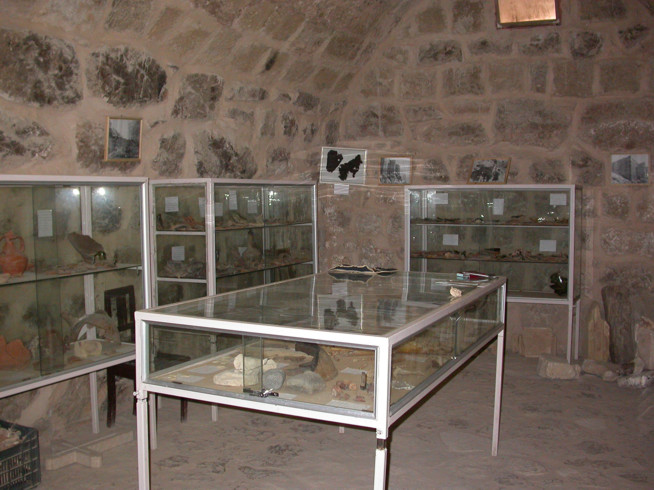
My place of work in the 2004 season, the small "museum" at Deir Mar Musa, where the pottery and other finds were kept. Fr. Paolo talked to me of improving the museum, and I knew several museologists back in Toronto that would leap at the chance.
My reasons for thinking this group important is related to my history of studying the glazed pottery of the Mediaeval and later Middle East (c. 600-1800). I had undertaken major studies of the earlier pottery, focusing on the lustre-painted wares, which essentially ended in 1250 in Syria (most of this is published in my book "Shine Like the Sun"), and also the Chinese-influenced "Blue & White" industry starting in c. 1380 (most of this research is in the book I wrote with Lisa Golombek: "Tamerlane's Tableware"); thus clearly leaving a gap in the middle. For the elite stonepaste bodied wares this is less of a problem in Syria, where over 60 thin-sections have defined the single production centre for stonepaste-bodied wares of this period: Damascus. However from my exposure to the pottery of Aleppo through 5 seasons working there, and travelling around Syria at that time and subsequently, seeing the pottery also of the Damascus citadel, Masyaf, Hama, and elsewhere, it is clear to me that the lead-glazed wares represent a number of local production centres, a fact that petrographic analysis is not necessary to prove (although unpublished data from Aleppo indicates this). Hence my interest in the Deir Mar Musa group, which from initial inspection looked like it all came from the same place, and was made about the same time. This seemed to me to be the best way to approach the pottery of the "Mamluk" period, to do a series of studies of useful assemblages such as this, and use them as constructive blocks of data as a foundation for a more complete study.
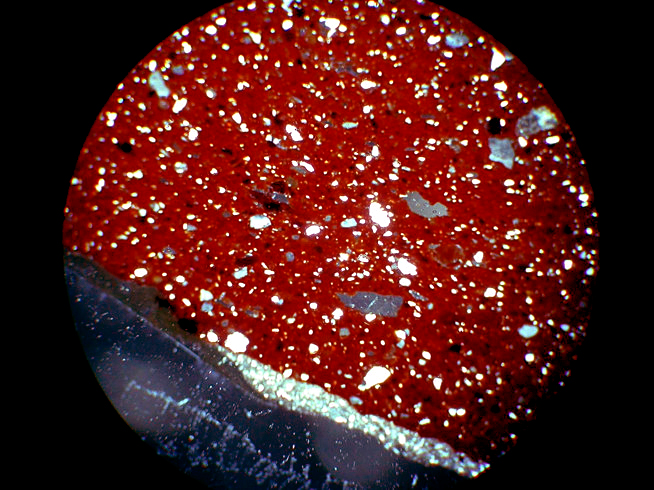
This is a thin-section of one of the slip-painted vessels, showing the body filled with charactersitic inclusions, the white slip on the surface, and the thin lead-glaze over that (cross-polarised light, width of view about 10mm)
One of the important things that needed to be done was to undertake petrographic analysis of the lead-glazed pottery. This is a technique derived from geology, and can be applied to archaeological pottery to see exactly which rocks and minerals can be found within the pottery, plus their size, degree of roundness, sortedness, and many other variables. This essentially creates a fingerprint that can identifiy a production centre. This showed that all of this pottery was made in the same place, and that the place was most probably Damascus, judging by the relations with the stonepaste fabric of Damascus.
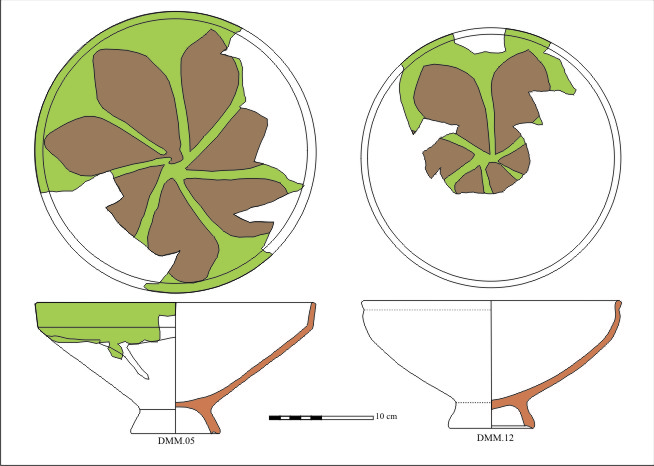
Archaeological drawings of the Deir Mar Musa slip-painted pottery.
The next thing to consider is the dating of the pottery. Preferably this should be done by finding pottery in excavations, or even better, written right on them, but we will look at the forms and decoration. Archaeologists draw pottery in a particular way that enables us to see through the pottery that looks like a cross-section. This helps us to really understand the shape in a detailed way. Looking at the lead-glazed wares from Deir Mar Musa, the form clearly shows that it is copying imports of celadons from China, which also have patterns of flowers on them (like some of the lead-glazed wares do). From my research on pottery from Iran, which is very well-dated because the potters actually wrote dates on some of them, I know that the local forms became entirely based on the imported Chinese forms after about 1285. The decoration and forms do not, however, reflect the influence of Yuan Blue and White imported from China, which became very important in after about 1380.
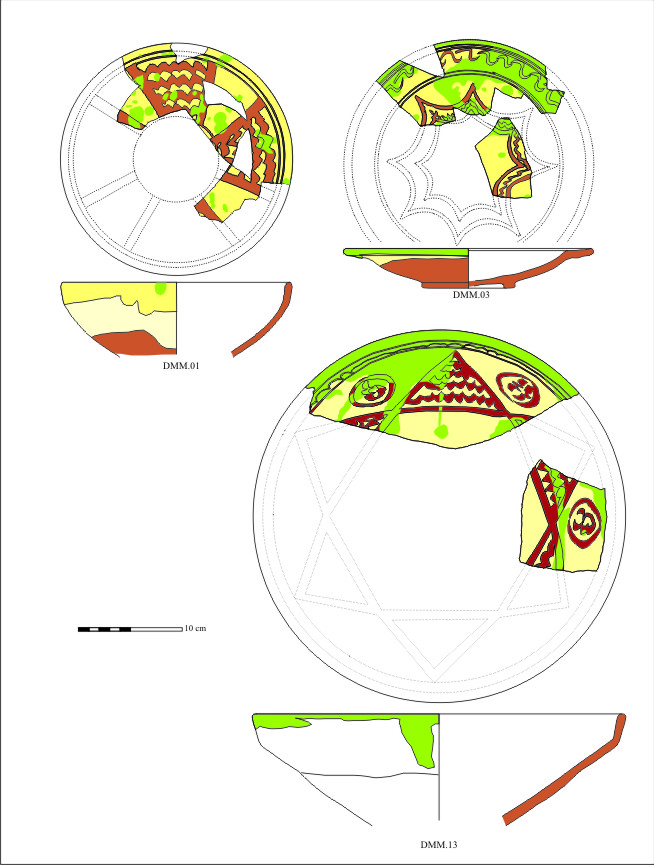
Archaeological drawings of the Deir Mar Musa slip-incised pottery.
So the question remains, why so much fourteenth-century pottery? There is nothing in the archaeological record to provide any evidence for why all the diagnostic pottery at the monastery should belong to the fourteenth century. Apart from the large fragments drawn here, there were a significant number of smaller fragments of these types. Given the fact that they have such similar rim profiles, some of these fragments may fit the drawn vessels, or be from other similar vessels, one may reasonably conclude that the complete assemblage originally belonged to about thirty glazed ceramic vessels. I had originally assumed that all of these fourteenth-century fragments (especially given that they were large pieces and had not been underfoot for some time) marked a period of abandonment of the monastery. However, my architectural study of Deir Mar Musa indicates that the monastery flourished for centuries afterwards. It might be assumed that there was something unusual about the time the pottery was deposited, or something unusual happened. For most of the monastery’s history the material culture was probably very modest. Although monasteries may at times be sites of elite occupation, there is no reason to believe that this would often have been the case, particularly given the vows of poverty taken the residents.
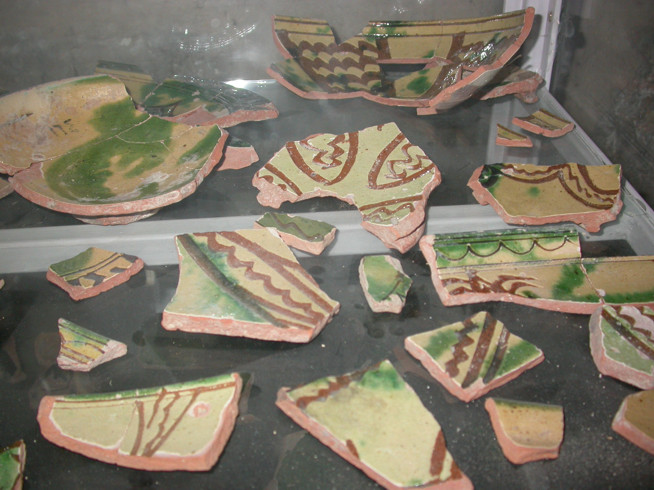
Fragments of slip-incised lead-glazed ware, some may fit the larger fragments, others are from other, very similar, vessels.
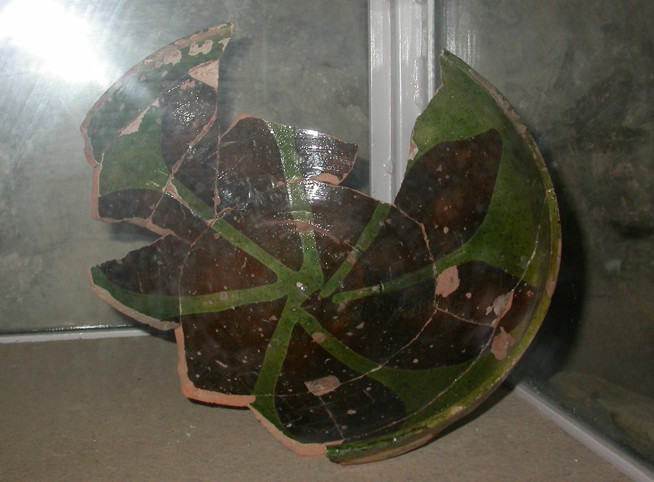
GLOSSARY
Alkali glaze - a glaze with a flux of an alkali element, including potash and sodium.
Celadon - a type of pottery imported from China, typical from Longquan, with a stoneware body (fired to about 1200 degress C) and a lime-fluxed glaze coloured green by the presence of iron fired in a kiln that has no oxygen in it.
Earthenware - a ceramic body fired to about 1,000 degress C (lower than stoneware or porcelain
Fabric - the ceramic body of the pottery itself, may include a fabric defined by petrographic analysis, also known as a petrofabric.
Firing - to be made into pottery, clay must be fired in a kiln. Clay is made up of clay minerals that have water as a part of their atomic structure. In the firing process this water is driven out, the clay is destroyed and formed into a glassy mass ("ceramic"), and is essentially fixed that way forever. Pottery can therefore never be melted down and reused, or broken down by decay, and every piece of pottery ever made is available for study by archaeologists. This is why it is a very important type of artefact for archaeologists.
Flux - the vitreous covering of pottery known as a glaze is a glass made primarily of silica - essentially quartz. Quartz only melts at high tempertaures, too high for a pottery kiln, so a flux must be added (rather like you add salt to ice to make it melt at a lower temperature). The main glaze fluxes in the Middle East are the alkalies (soda and potash) and lead.
Lead glaze - a glaze with a flux of lead.
Petrographic analysis - a technique for the microscopic study of rocks and minerals, used to identify their mineralogy and texture.
Slip - typically fine clay in a liquid, slip can be painted onto pottery, or poured all over it and then scratched off ("incised") with a tool to show the darker body underneath.
Stonepaste - a ceramic body invented in the Middle East, made of about 8 parts crushed quartz, one part of glass, and one part of clay.
Thin-section - a slice of material, in this case pottery, that is 0.03 mm thick which enables the inclusions to be studied using a microscope for petrographic analysis.
Underglaze-painted - in this technique a pigment, such as cobalt for blue or chromium for black, is painted onto the surface of the pottery, and then a glaze is applied over the paint. The glaze will have to be an alkali glaze, as a lead glaze becomes too runny in the firing.
FURTHER READING
A Longquan Celadon bowl in the ROM
A Yuan Blue & White dish in the ROM
ROM Ceramic Petrology Facility
NAVIGATION (links will become hot as they are published)
The Monastery of St Moses, Syria: Introduction
The Monastery of St Moses, Syria: The Pottery
The Monastery of St Moses, Syria: The Frescoes
The Monastery of St Moses, Syria: The Cave Survey
The Monastery of St Moses, Syria: The Buildings
The Monastery of St Moses, Syria: The Prehistoric Remains
The Monastery of St Moses, Syria: Conclusion and Syria Today
